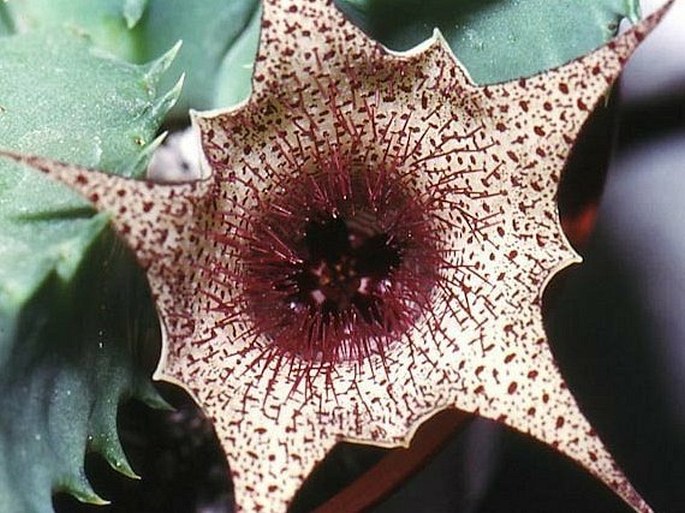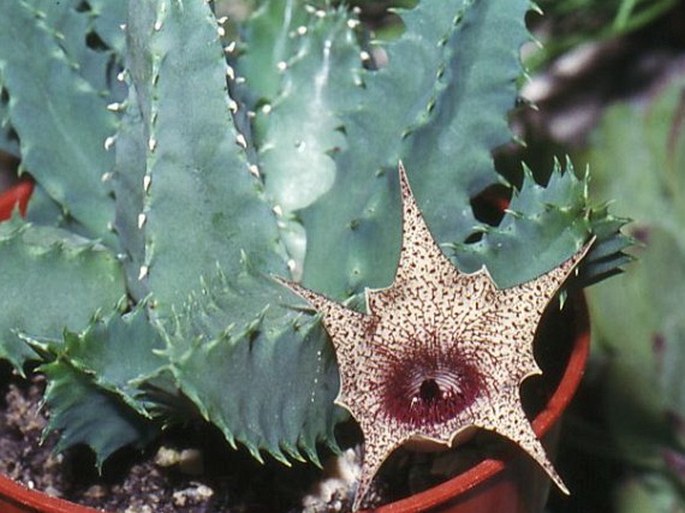Syn.: Stapelia barbata Masson, Stapelia duodecimfida Jacquin, Stapelia tubata Jacquin, Huernia tubata (Jacquin) Haw., Huernia barbata var. tubata (Jacquin) N. E. Brown
Family: Apocynaceae Juss.

Distribution: Republic of South Africa – Northern Cape, Free State, Eastern Cape.
Ecology: Growing in grass, on rocky slopes in fast draining soil, under bushes, in bright light but sheltered. Blooms after summer dormancy.
Description: Perennial succulent herb, stems numerous, erect, 2–6 cm long, 1.5–2 cm thick, 4–5 angled, angles sharp, sinuate, teeth spreading, gray green; flowers 3 or several together from the base of the young shoots, pedicels 10 mm long, corolla campanulate, about 5 cm across, tube 16–20 mm long, lobes triangular, long tapering, somewhat recurved, intervening lobes small, curved outwards, glabrous outside, pale, inside cream coloured to yellowish, marked with dark red spots which are confluent in lower part of the tube into transverse lines, up to the upper third of the lobes set with long, dark red stiff hairs. Interstaminal corona lobes often fused into a crenate disc, or deeply bifid. Staminal corona black, rarely brown, cream or pink, tips black and erect. Pollinia brownish yellow.
Note: Genus Huernia named after a Dutch missionary and pioneer collector of Cape plants Justus Heurnius (latinized name) and the irony of botanical nomenclature, described by R. Brown with the wrong spelling Huernia, which spelling must be retained by the rules. Barbata is descriptive name – hairs of the flower reminding of a beard (barba).


These images were taken in culture.


